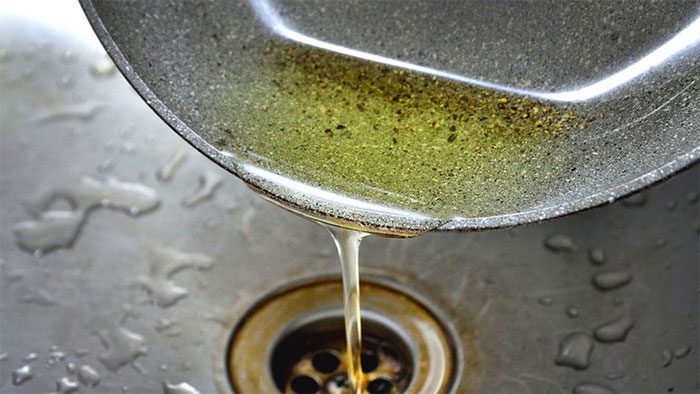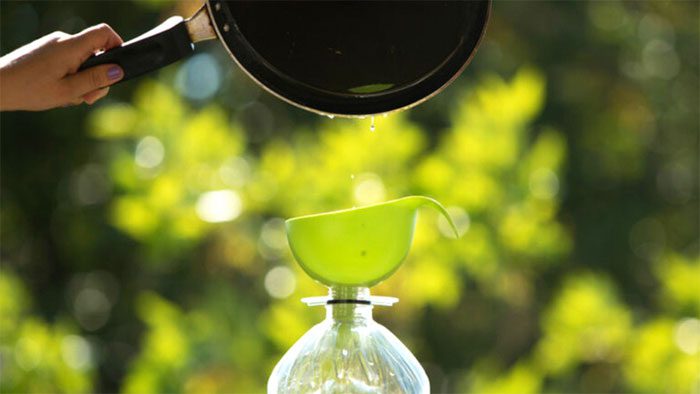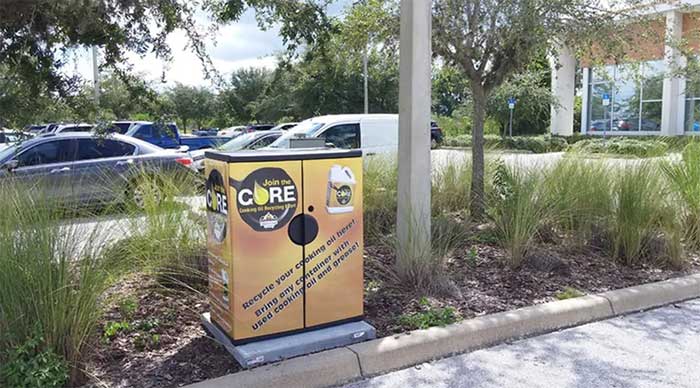In several countries, the process of disposing of leftover cooking oil is widely recommended to the public to minimize environmental impact.
Where Should Leftover Cooking Oil Be Disposed?

Do not pour leftover cooking oil down the drain – (Image: GETTY IMAGES).
In Vietnam, many housewives find themselves puzzled when holding a pan of leftover cooking oil: should they pour it down the sink, throw it in the trash, or is there another way to dispose of it?
On the National Geographic website, Kris Bordessa, an author of several books on green living, notes that in many countries, most housewives also feel “confused” about how to properly dispose of leftover cooking oil.
She explains: “Pouring leftover oil down household plumbing or toilets can cause oil to cling to the sides of the pipes, which can eventually damage them.”
If poured directly into residential drainage systems, oil can become a “glue” that traps debris, leading to clogged drains.
If the oil is poured directly onto the ground, it can attract various harmful animals and insects that may damage crops.
According to Kris Bordessa, some cities around the world currently have recycling programs for household cooking oil disposal.
On an industrial scale, many large restaurant chains can send billions of liters of leftover oil each year to factories that convert it into biodiesel.
“However, not everyone can easily access such convenient recycling programs,” Kris Bordessa mentions.
Disposing of Leftover Cooking Oil Is Not Difficult

Authorities recommend that people should place oil in containers before disposal – (Image: GETTY IMAGES).
According to the recycling agency of San Jose (USA), one of the first principles is to never pour cooking oil down the sink, toilet, household drainage pipes, or city sewers.
Instead, pour a small amount of leftover oil into bags, bottles, or jars, seal them tightly, and throw them in the household trash.
For more than 1 quart (approximately 0.94 liters) of leftover cooking oil, the same method applies but dispose of it in a hazardous waste container instead of the regular trash.
It is important to note that cooking oil should not be poured when hot; wait for it to cool.
Similarly, the Seattle Public Utilities (USA) also recommends disposing of oil by placing it in bottles, jars, or containers. If it is not animal fat, residents can send it to some local recycling facilities.
Additionally, sauces that contain oil, mayonnaise, and dairy products such as cream and sour cream should not be poured down the drain as they can clog the pipes.

A collection point for leftover oil in Florida (USA) – (Image: GETTY IMAGES).
Meanwhile, the city of Canberra (Australia) has provided extensive advice to residents on how to dispose of used cooking oil. Families with more than 20 liters of leftover oil can have it collected for free at designated locations.
Companies with industrial-scale leftover oil will be provided with hotlines for specialized oil collection and recycling companies.
For smaller amounts, residents are advised to place the oil in containers, seal them, and throw them in the common waste bin.


















































